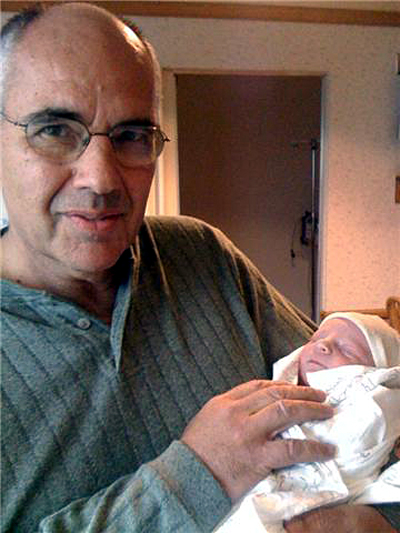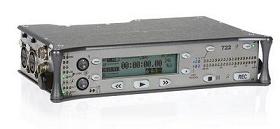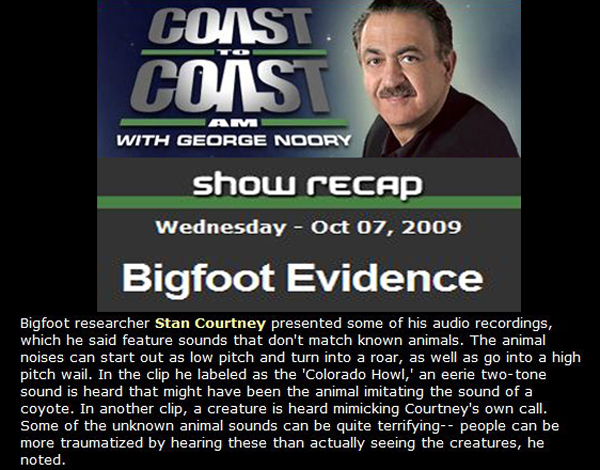An Encounter At Krekel’s
Near the end of summer I stopped at Krekel’s Custard & Hamburgers, the local hamburger joint, near our home in Pawnee, Illinois. As I was waiting for my order an officer from the IDNR, the Illinois Department of Natural Resources, came in and placed an order also.
I briefly thought to myself whether I should keep my mouth shut or whether “just for fun” I should engage him in a conversation. I decided to charge ahead.
Here is our conversation –
Stan, “Sir, I have a recording on my cellphone, would you mind listening to my ringtone and telling me what the sound is?”
The officer was very polite and responded , ” Sure, I would like to here it.”
I went through the four or five tabs required to play back my recording of the Illinois Howl.
The officer listened intently and then I asked, “What do you think is making that sound?”
He responded “Sounds like a bigfoot to me.”
I was very surprised and said “Really, why do you say that?’
He said “Oh, I listen to the documentaries on TV.” He then said “Where did you get that?”
I said “I recorded it from my backyard north of town.”
He said “Really, north of town? What town?”
I came back with “I live north of town, along Horse Creek.”
He said “What town?”
I said “This town, Pawnee.” I was starting to get confused.
He said “You mean north of Springfield, right?”
I restated “No Sir, I live here and I recorded that about a mile north of our location.”
The office didn’t say anything, he just stood there looking at me, thinking.
Then he exclaimed, “I’ll be damned!” and walked out the door and got in his vehicle and left.
I remember reading an article from the Peoria Star Journal dated Wednesday, February 15, 2006.
Illinois Department of Natural Resources spokesman Chris McCloud said there has never been a public demand to check possible sightings of a Bigfoot.
The IDNR deals with animals native to Illinois, and Bigfoot is not one of them, he said.
Now I don’t expect the IDNR to publicly acknowledge the existence of sasquatch in Illinois but I do find it interesting to talk with them. We have also sold our home in Pawnee where we lived along that small creek for 23 years. I wanted to move to a location where I could do my research that had more woods, more birds and yes, even more animals.
John Green’s Database Now Online
For over 60 years John Green of Harrison Hot Springs, B.C. has been collecting sighting reports, researching and publishing. Now John has made his entire database available online. It can be seen at:
http://www.sasquatchdatabase.com/
Thank you Mr. Green for your years of dedication and persistence in the field of sasquatch research.
Field Recording – Sound Editors
Sound editing is a very important aspect of field recording. I typically record 24/7 which necessarily means that the sound files are very large. The newest editions of sound editing software allows the user to review sound files both visually and audibly. After isolating sound clips they can then be filtered to eliminate extraneous noise.
The two biggest factors to remember with sound editing are:
1. The closer to the sound source the less filtering that is necessary.
2. The higher the quality of the recorder and microphone eliminates the need for sound manipulation.
Sound editors are so numerous that I can not list them all or try them all out to give a fair evaluation. The following is a list of the most popular brands, includes links to the products as well as forums that deal with using each specific editor.
Sound editors span the gamut from free to very expensive.
——————————————————————————————————————
——————————————————————————————————————
Audacity
——————————————————————————————————————
——————————————————————————————————————
——————————————————————————————————————
——————————————————————————————————————
——————————————————————————————————————
Field Recorders – Pt 5
Last time we looked at a recorder that was listed at around $1300. The next step up is:
Above $1875.
In the highest price range is the Sound Devices 7 series.
From their website I quote the following:
7-Series Family of Digital Audio Recorders
The high-resolution 7-Series family of digital audio recorders shatter the size, performance, and feature-set paradigms of all previous generations of audio recorders. They are the next generation – replacing digital and analog tape-based portable recorders with far more powerful file-based digital recording devices. The two-track (702, 702T, 722), four-track (744T), and eight-track (788T) recorders write and play audio files with either 16 or 24-bit depth at all professional sampling rates, up to 192 kHz (48.048 kHz on the 788T). Multple storage mediums, analog/digital I/O, and high-speed computer connectivity make all 7-Series recorders stand out as world-class products.
This series of recorders from Sound Devices has taken the industry by storm and is acknowledged as being an excellent field recorder.
There are five models available depending on how many channels you desire and whether it comes with Time Code and hard drive included.
702 – $1,875 – 2 channel – CompactFlash only
702T – $2,495 – 2 channel – CompactFlash, with Time Code
722 – $2495 – 2 channel – CompactFlash, internal hard drive
744T – $4095 – 4 channel – CompactFlash, internal hard drive
788T – $5995 – 8 channel – CompactFlash, internal hard drive
The manufacturers website:
The user’s manuals can be found at:
Excellent reviews can be read at:
Forums discussing this recorder are:
Sound Devices Forum
Recording media – uses 3 types of recording media
– Compact Flash – currently 32GB is the largest available
– Internal Hard drive – I had a 160GB installed
– External Hard drive – firewire connection to external hard drive
Maximum recordable time –
FlashCard – Using a A-DATA 32GB Speedy CompactFlash card the record time in .wav at 44.1kHz 16bit CD quality mode is 12 hours 27 min.
Internal hard drive – record time in .wav at 44.1kHz 16bit CD quality mode on a 160 gig hard drive is 252 hours 21 min.
External hard drive – unlimited
Batteries – uses Sony NPF970 L Series Camcorder Battery – about 8 hrs record time, I use an external battery supply
Recordings –
Black-billed Magpie  Black-billed Magpie
Cassins Finch Cassins Finch
Green-tailed Towhee Green-Tailed Towhee
Hermit Thrush Hermit Thrush
Microphones – the best omnidirectional microphone made today for field recording is the Sennheiser MKH-20 – Omnidirectional Condenser Microphone listed at $1,395.95.
Conclusion – I have been recording with the 722 for 2 years now. It has been proven to be an amazing field recorder. It is fairly easy to use, extremely durable and of superb sensitivity to very weak and distant sounds.
Pros
– excellent pre-amps
– superb sound quality
– best field recorder on the market
Cons
– very expensive
– heavy, 2.6 lbs without battery










